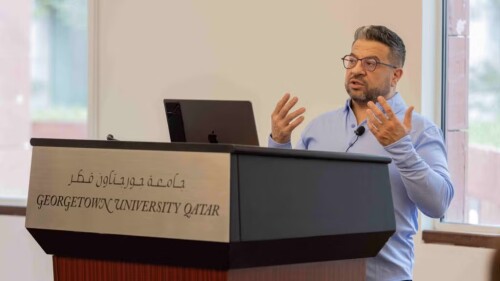Freelancers answer to no hierarchy and attack with little warning. |
Earlier this month, I fired a silver bullet at the heart of the “Lone Wolf” analysis, a flawed paradigm depicting every jihadist without demonstrable ties to a terrorist organization as an unfathomable mystery whose motives we may never know. Since then I have been inundated with inquiries about a replacement.
If we reject the term “lone wolves,” some asked, what shall we call them? In a succinct message, Daniel Pipes offered a wonderful replacement: “freelancers.”
It’s a suitable enough fit based solely on the association with writers or photographers who work without contractual obligations to any particular publication. But the term’s etymology in the language of warfare makes it perfect. The word “lance” comes from the Latin lancea, which is a Roman light spear. “Lance” became a nearly universal word in Western Europe, adopted by both Romance (lanca, lanza) and Teutonic (lans, lanze) languages. The legendary warrior Sir Lancelot gets his name from the weapon.
In the Middle Ages, spears got bigger, and in medieval warfare the term “lancer” came to denote a horse-mounted spearman. In an era when kings and feudal lords owned the means of conducting war, the Italian condottiere (like Francesco Sforza and Federigo da Montefeltro) broke the mold by selling their martial skills to the highest bidder. Today we call them mercenaries.
Global jihadism has become more dispersed, with greater freedom among combatants.
The English-speaking world also had warriors who owned the means of conducting warfare. Indentured to none and able to fight for any cause and in any army, they were called “free lancers.”
Like medieval warfare, the global jihad movement has evolved. Once dominated by hierarchical structures with centralized power, it has become a more dispersed phenomenon with less control over, and greater freedom among, combatants. A pivotal point came with the defeat of the Taliban and dispersal of al Qaeda in 2001.
Osama bin Laden once ruled as the uncontested commander of the most significant jihad organization. Under him, a Shura council oversaw the activities of four committees (Special Operations, Military, Public Relations and Finance), which in turn supervised untold numbers of independent cells.
After the U.S.-led invasion of Afghanistan, al Qaeda no longer controlled the means of conducting jihad. The training that once occurred in specialized camps located in Afghanistan, Pakistan and the Sudan ceased. Bin Laden struggled to maintain his position atop the chain of command.
But even at its peak of power, al Qaeda associated with freelancers. Khalid Sheikh Mohammed purportedly cooperated with al Qaeda for years before swearing bay’a (allegiance) to bin Laden. His nephew Ramzi Yousef fought for the cause without ever swearing allegiance to anyone. The debate still rages over whether Abu Zubayda was a member of al Qaeda or a free-lance jihad financier.
Likewise, the Palestinian jihad against Israel was once dominated by organizations like the PLO, PIJ, Hamas, the Al-Aqsa Martyrs Brigades, and others. During the deadliest period of the “second intifada,” the proliferation of organizations meant that recruiters, handlers and dispatchers were ubiquitous, and freelancers were rare. And while those organizations show no signs of going away, the current so-called “Knife Intifada” has brought about a tactical shift. Kitchen knives and even screwdrivers are the tools of freelance jihad in Israel. When these are unavailable, an opportunistic freelancer can always deploy cars, trucks even bulldozers as weapons.
Today’s jihadist often works without ties to an organizational hierarchy.
In the late 20th century, jihad terrorism was conducted primarily by organizations like the Muslim Brotherhood, Hezbollah and al Qaeda. The attacks were meticulously planned over the course of months and even years. In the 21st century, it is beginning to look like jihad terrorism might become dominated by freelancers whose attacks may be near-spontaneous strikes requiring little planning.
The term “freelancer” captures precisely the entrepreneurial spirit of today’s jihadist who works without ties to an organizational hierarchy but follows the same pattern concerning targets, tactics and goals. Economically, freelancers represent the cheapest form of jihad. Operationally, they are less likely than “members” to attract the attention of law enforcement officials. “Training” can be conducted online.
Even if they have “no direct links” to an organization’s leadership and have never set foot in Syria or Iraq, American and European Muslims who conduct attacks in the name of the Islamic State or al Qaeda, or “in defense of Muslims,” are just as much a part of the movement as anyone fighting in Aleppo or Sana’a.
They are not lone wolves and their motives are not unknowable. They are freelancers in the global jihad.








